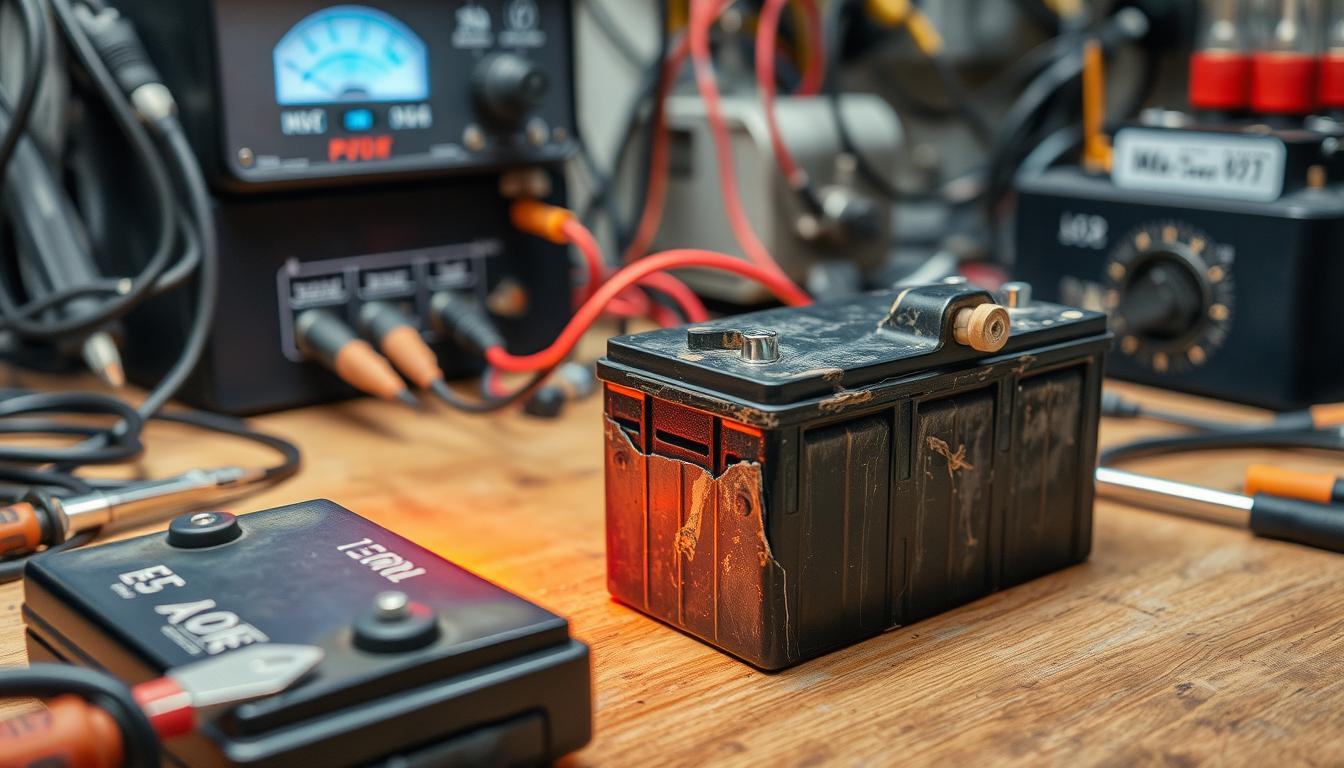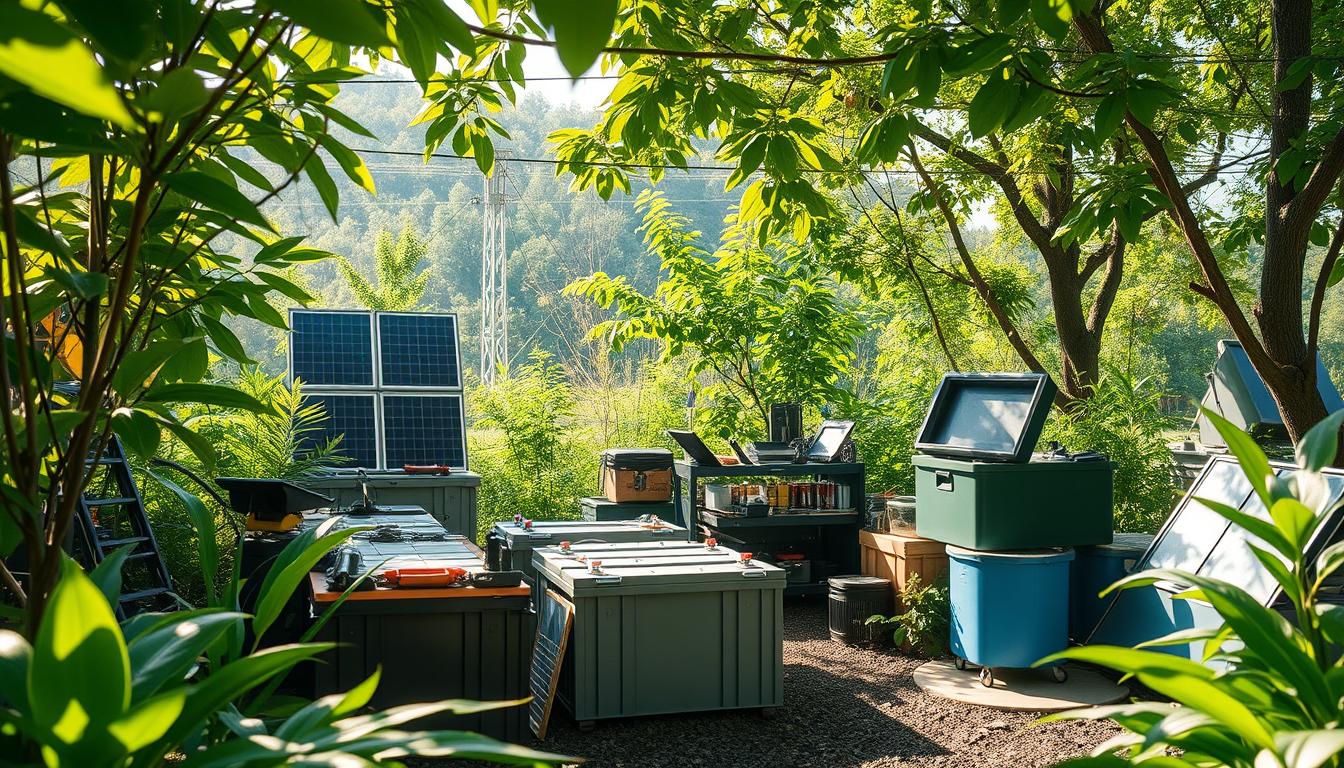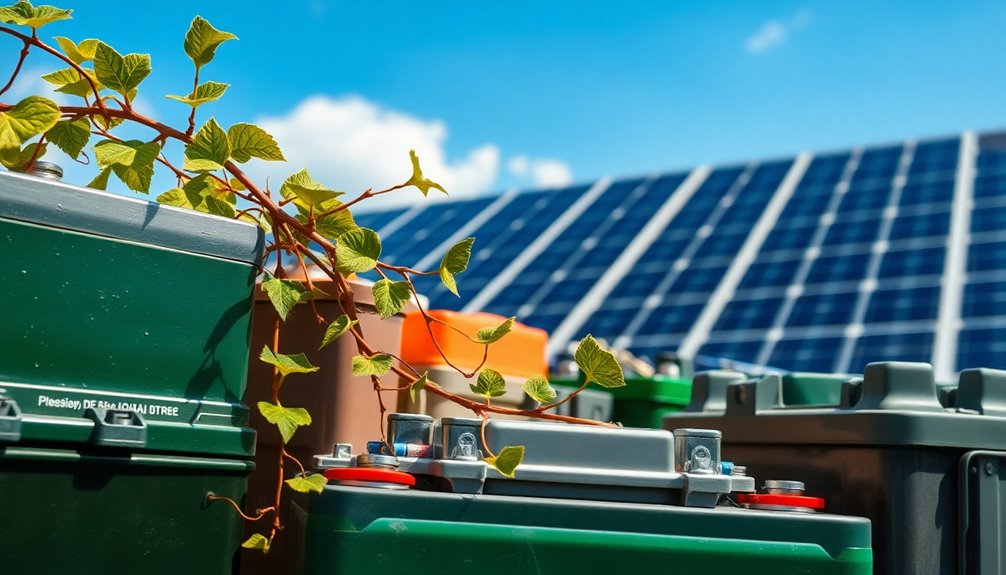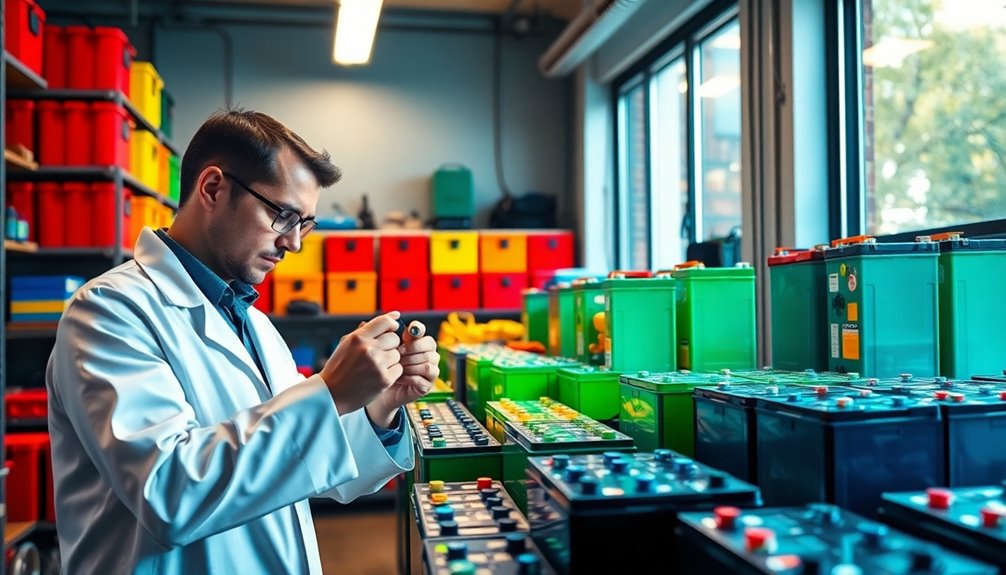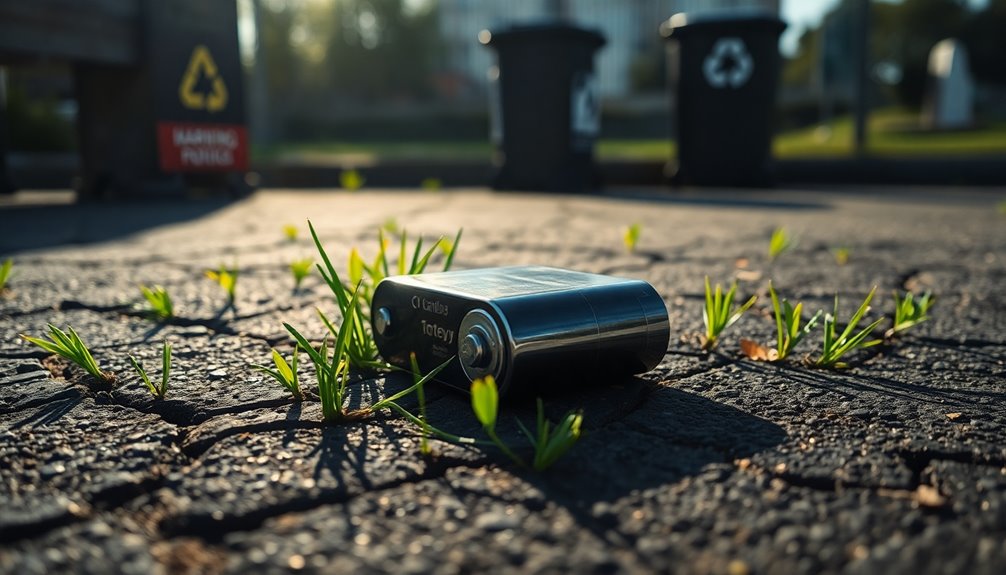We’ve all dealt with the annoyance of our devices dying at the worst times. This can make our laptops slow or cars hard to start. It shows how much we rely on batteries. But, what if there’s a way to make old batteries work like new again? Battery reconditioning not only saves our gadgets but also saves money and helps the earth. It’s important to know if a battery is good for reconditioning. This can free you from buying new, expensive batteries. You may find that with some care, your devices can work perfectly again. Join me in learning how to revive dead batteries1.
Key Takeaways
- Battery reconditioning can save you money by revitalizing aging batteries.
- Recognizing the signs of battery wear is crucial for effective maintenance.
- Proper battery care can extend the life and efficiency of your batteries.
- Reconditioning is safe to perform at home with the right tools.
- Choosing to recondition batteries helps reduce environmental waste.
Understanding Battery Reconditioning
Battery reconditioning helps batteries work like new by fixing wear from age, use, and the environment. It’s key for longer battery life and better performance. Learning the importance of battery care leads to smarter choices for your batteries.
What is Battery Reconditioning?
The batteries reconditioning process involves steps to bring back a battery’s full function. It works for different types, like lead-acid and lithium-ion. Through reconditioning, batteries perform better than when they were worn out. This means they last longer and work more efficiently2.
Why Is Battery Reconditioning Important?
Knowing how to recondition batteries saves money by keeping your old batteries going longer. It’s cost-effective and reduces the need for new ones2. This method also lessens electronic waste, helping the planet2. Taking care of batteries this way supports sustainability. It shows why reconditioning is crucial for battery owners.
How Batteries Work
Batteries are complex but intriguing. They have various battery components that change chemical energy into electrical energy. This process is vital for their reconditioning.
Components of a Battery
A typical battery includes:
- Positive electrodes: Often made of materials like lithium or cobalt.
- Negative electrodes: Commonly composed of lead in traditional batteries.
- Electrolyte solution: This serves as a medium for ion transfer, playing a vital role in operations.
- Separators: Essential for preventing short circuits within the battery.
These battery components interact during charging and discharging. This interaction affects the battery’s life and how well it works.
The Chemical Reactions Involved in Charging and Discharging
Charging a battery sets off chemical reactions. For example, in lead-acid batteries, lead oxide forms on the positive plates while charging. When the battery powers something, the lead oxide turns back into lead. This change creates electric energy we can use3.
However, repeated charging and discharging can harm the battery. Issues like sulfation can lower the battery’s ability to hold a charge. Getting rid of sulfation can take up to 40 hours but will improve the battery’s capacity significantly43.
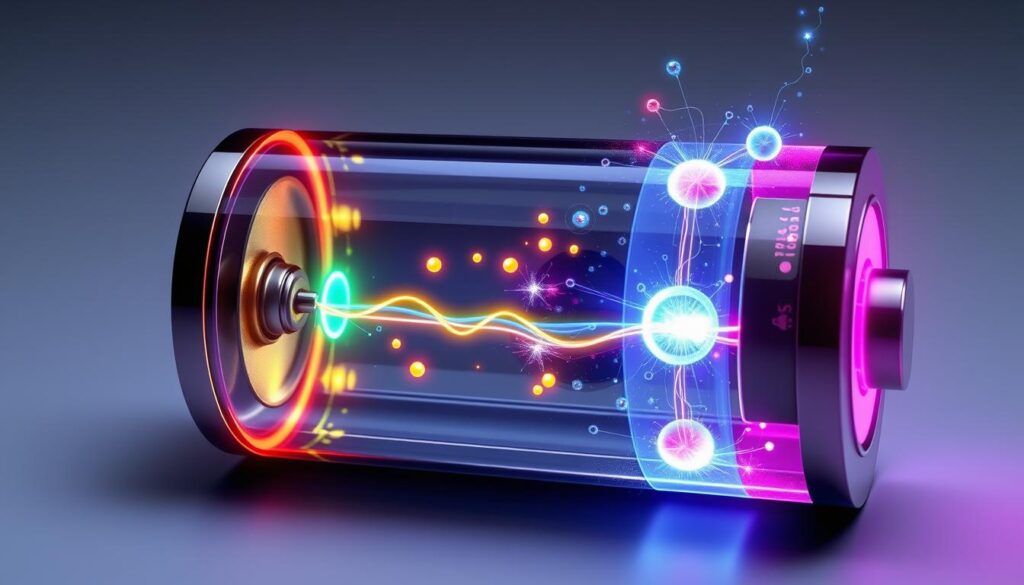
Signs Your Battery Needs Reconditioning
Spotting early signs of battery wear can keep you ahead of future issues. If your battery struggles to hold a charge, it might need a fix. Watch for these clues that show your battery needs help.
Reduced Run Time
Your device or car might run out of juice much quicker than before. This means the battery isn’t performing well. When batteries get old, they don’t keep energy as they should. This leads to shorter use times.
Slow Charging and Overheating
A battery that charges slower than before could be failing. Slow charging points to deeper problems. Also, if it gets too hot while charging, that’s a bad sign. Batteries need to stay cool; too much heat can destroy them or make them stop working.
Physical Damage Indicators
Look out for swelling, leaks, or bulges on your battery. These are big red flags. They mean there’s a serious problem inside. Checking your battery often can help you spot these issues early on.
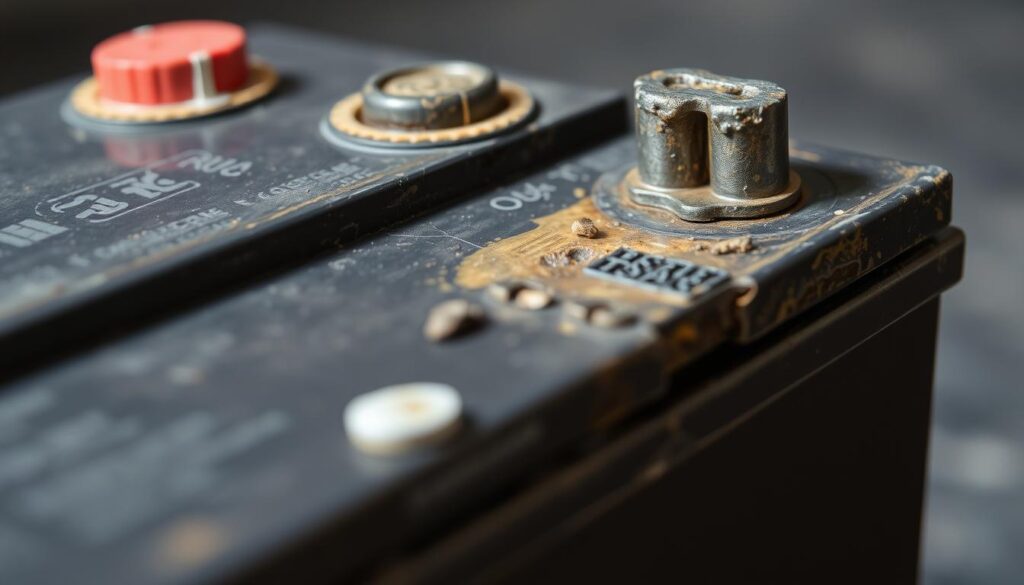
| Sign | Description |
|---|---|
| Reduced Run Time | Device or vehicle running out of power faster than usual, indicating battery deterioration. |
| Slow Charging | Notable delay in charging times, suggesting underlying battery performance issues. |
| Overheating | Battery becomes hot during charging, indicating potential hazards and damage risk. |
| Physical Damage | Signs like swelling, leaking, or bulging require immediate attention to avoid failure. |
By keeping an eye out and noticing these signs, you can act early to keep your battery going strong5.
How to Identify if a Battery is Worth Reconditioning
To figure out if a battery can be reconditioned, you need to look at two things. First, check how well the battery performs. Then, take a good look at its physical shape. Using both battery evaluation tips lets you make a smart choice about fixing up your battery.
Assessing Battery Performance
Begin by using a multimeter to check each cell’s voltage. This helps spot any weak cells that might lower the battery’s effectiveness. If you find the voltage is too low, your battery might be a good candidate for reconditioning2. Keep an eye on the voltage regularly as you fix up the battery. This helps ensure you don’t overlook any problems2. For lead-acid batteries, try equalization charging. It can help get the cells working together properly again2.
Evaluating Physical Condition
Next, look over the battery’s outside. Check for rust, bulging, or any damage. These signs can tell you if it’s worth fixing up the battery. Remember, though, really damaged batteries may not be fixable. Always be safe when checking your battery to avoid hurting yourself or others.
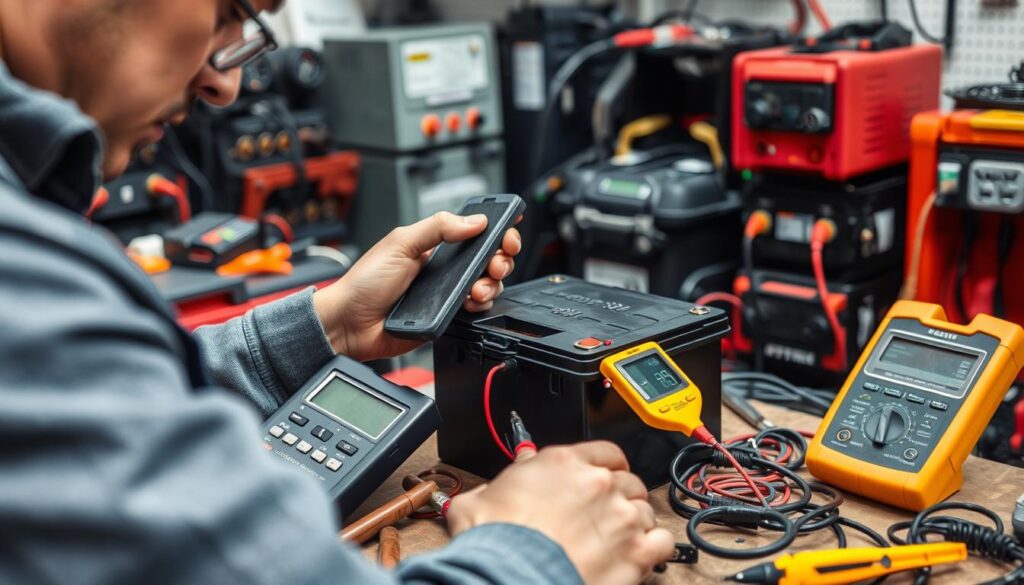
The Benefits of Battery Reconditioning
Reconditioning batteries has many advantages, like saving money and helping the environment. It’s cheaper than buying new batteries. This saves a lot of money2. Also, good suppliers offer reconditioned batteries with at least six months warranty. This proves they’re reliable6.
Cost-Effectiveness
Reconditioning your batteries can save you a lot. A reconditioned car battery might last another year or two6. It’s usually cheaper than getting a new one. You can find these batteries at many dealerships, helpful during emergencies6.
Environmental Benefits
Choosing to recondition has great benefits for the planet. It reduces electronic waste and cuts down on new batteries’ need2. Recycling a car battery stops harmful chemicals and scrap metal from harming the environment6. Reconditioned batteries can work as well as new ones, if not better. They last longer and perform more efficiently, helping the environment2.

Methods of Battery Reconditioning
Looking into how to recondition different types of batteries is key for keeping them working well and lasting longer. It’s important to know the right ways to handle lead-acid versus lithium-ion batteries. Each one has its own special method.
Techniques for Lead-Acid Batteries
Lead-acid batteries are widely used and have several reconditioning steps. A key method is desulfation. This process breaks down sulfate crystals that build up and affect the battery’s performance. A desulfator device is used to revive the batteries effectively.
Another method is equalization charging. It helps make the voltage in the battery cells even. This step improves the battery’s life. For batteries that need water, regularly adding distilled water keeps them working right. It stops them from aging too fast and keeps them efficient7.
Reconditioning Lithium-Ion Batteries
Reconditioning lithium-ion batteries requires different steps. Cell balancing is very important. It makes sure each cell in a pack has the same charge. You can use special chargers to make the voltage even across all cells.
Also, cycle charging is key to keeping lithium-ion batteries at their best. This involves fully charging and then discharging the battery often. Knowing how to do this well can make lithium-ion batteries last longer and work better8.

Conclusion
Understanding how to fix old batteries is very important. If you know when a battery is wearing out and how to fix it, you can use it for much longer. For example, fixing a battery can make it last from three to five years. Also, almost ninety percent of replaced phone batteries could be fixed. This could save the U.S. over $650 million a year910). This not only saves you money but also helps reduce trash from thrown away batteries. Lead-acid batteries alone make about 2.8 million tons of trash every year10.
Using these tips for taking care of batteries helps your pocket and the Earth. Every year, we recycle a million lithium-ion batteries that could still be used. Most of these batteries can still work up to 80% as good as new9. By using the advice in this guide, you can take care of your battery needs in a way that’s good for the planet.
Learning about fixing batteries means giving them a second chance while being kind to the environment. With this info, you can make choices that are good for both your batteries and the Earth. Your batteries will work better for longer, and you’ll be helping to keep our planet clean.
FAQ
What is battery reconditioning?
How can I tell if my battery needs reconditioning?
What types of batteries can be reconditioned?
Is it worth reconditioning my battery?
What are some key methods for lead-acid battery reconditioning?
What are the environmental benefits of battery reconditioning?
How do I assess my battery’s performance for reconditioning?
Source Links
- https://greenbeanbattery.com/reconditioned-hybrid-battery-vs-cell-replacement/?srsltid=AfmBOoqfYaGTMJs4pHl_AAp28Gp2967ytp2p7ykXwEONU2q1o9rZ1ey3 – Reconditioned Hybrid Battery vs. Cell Replacement | Green Bean Battery
- https://www.ufinebattery.com/blog/battery-reconditioning-explained-a-comprehensive-guide/ – What You Should Know About Battery Reconditioning
- https://www.tycorun.com/blogs/news/battery-reconditioning?srsltid=AfmBOorWDU3ChDbRIARhYM7GOV9fAAJb-4Av2_PfXHEccH_y-oalFpQu – Can battery reconditioning be achieved and how effective it is
- https://www.nuvant.com/blog/hybrid-battery-reconditioning-guide – Hybrid Battery Reconditioning Guide | Nuvant Systems Inc.
- https://www.linkedin.com/pulse/how-recondition-car-battery-5-easy-hacks-rejuvenate-my-krishna-pr-fjxqc – How to recondition a car battery? 5 Easy hacks to rejuvenate my car battery
- https://batteryclinic.co.za/benefits-using-reconditioned-car-battery/ – Benefits Of Using A Reconditioned Car Battery
- https://www.instructables.com/Battery-Reconditioner/ – Battery Reconditioner
- https://www.usequantum.com.cn/8-ways-to-new-battery-reconditioning-course-review-without-breaking-your-bank/ – 8 Ways To New Battery Reconditioning Course Review Without Breaking Your Bank | 匡腾EHS信息化管理系统
- https://batteryuniversity.com/article/bu-803-can-batteries-be-restored – BU-803: Can Batteries Be Restored?
- https://vocal.media/education/the-process-of-reconditioning-a-battery-in-detailed-step-by-step-instructions – The Process of Reconditioning a Battery in Detailed Step-by-Step Instructions

